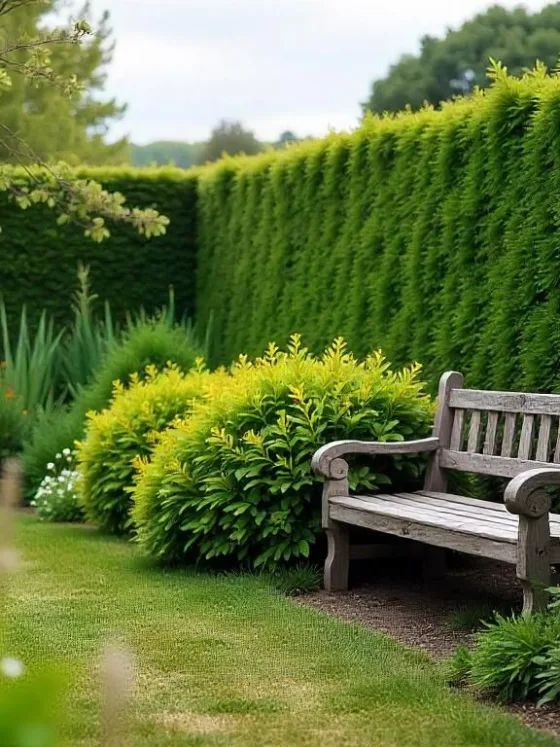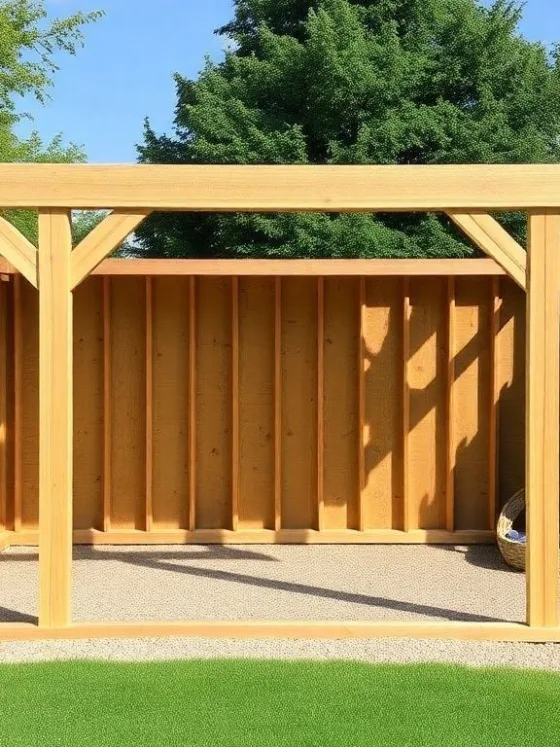Table of Contents Show
Introduction
A DIY bedroom makeover can transform your personal space into a true reflection of who you are. Your bedroom is not just for sleeping; it’s a place to relax, recharge, and express your unique style. By taking on this project yourself, you can customize every detail to fit your needs without spending a fortune. This journey not only enhances the look of your room but also boosts your mood and creativity, making it a more inviting place.
In this post, we will explore simple yet effective ideas and tips for your DIY bedroom makeover, helping you create a space that feels like home.
Step 1: Assessing Your Current Space
Before starting your DIY bedroom makeover, it’s important to assess your current space. This evaluation can provide valuable insights into how you can transform your bedroom to better suit your personal preferences and requirements. Here’s how to go about it:
Examine the Layout
Take a close look at the layout of your room. Identify the furniture pieces that you currently use, such as your bed, dressers, and nightstands. Consider both their functionality and aesthetics. Ask yourself which pieces you genuinely love and use regularly, and which ones might be causing clutter or discomfort. It’s crucial to determine what works for you and what doesn’t as this can significantly affect the direction of your makeover.
Measure Your Room
Accurate measurements are essential for effective planning. Measure the dimensions of your room, including walls, windows, doors, and furniture. This will help you visualize the space effectively and plan for any new additions or replacements.
Understand Your Lifestyle
Be mindful of your lifestyle and how you utilize the space. Consider factors such as whether you require a workspace or if you prefer a minimalist aesthetic. Understanding your habits will guide your decisions, ensuring that your makeover aligns with your needs.
Create a Wish List
Lastly, create a wish list for the makeover. This list should include everything you dream of having in your revamped bedroom, from color schemes to furniture styles and decor elements. Incorporating both your current favorite items and aspirational purchases can help in prioritizing changes during the makeover.
Remember that effective planning is key to ensuring your DIY bedroom makeover achieves the ambiance and functionality you desire for your space.
Step 2: Setting a Budget
When it comes to giving your bedroom a DIY makeover, it’s important to plan your finances carefully. This will help you keep the project manageable and enjoyable. The first step is to set a realistic budget, which will guide you throughout the entire process.
Assess Your Finances
Start by looking at your current financial situation. Figure out how much money you’re willing to spend on this project. Make sure to consider all potential costs, such as:
- Paint
- Furniture
- Decor
- Materials for DIY projects
- Any professional services you might need
Prioritize Your Spending
Once you have a clear understanding of how much money you have available, it’s time to prioritize your spending. Think about which elements of the bedroom are most important to you and will have the biggest impact on your overall satisfaction. For example, if having a new bed frame or a fresh coat of paint is more significant to you than additional decor, make those your top priorities when structuring your budget.
Find Ways to Cut Costs
It’s also essential to look for ways to save money without sacrificing quality. Here are some strategies you can consider:
- Shop at thrift stores, yard sales, or online marketplaces for second-hand items that can be transformed with a little creativity.
- Repurpose existing furniture by giving it a fresh coat of paint or new hardware, which can deliver a significant impact at a fraction of the price of new acquisitions.
- Engage in DIY projects instead of hiring professionals, as they often cost significantly less.
Research and Gather Inspiration
To boost your confidence and skills in executing your ideas, take the time to research tutorials and gather inspiration online. This will equip you with the knowledge needed for successful DIY projects.
By setting a realistic budget and prioritizing your spending wisely, you’ll be able to achieve your dream DIY bedroom makeover without overspending. Remember to stay resourceful and creative throughout the process – these qualities will help you create a beautiful and personalized space that reflects your needs and style preferences.
Step 3: Choosing a Color Scheme
The color scheme you select for your DIY bedroom makeover plays a crucial role in establishing the overall mood and atmosphere of the space. Color has the power to evoke emotions and influence our state of mind, making it essential to choose a palette that not only reflects your personal style but also promotes relaxation and comfort.
Understanding Color Psychology
When planning your bedroom makeover, it’s important to consider how different colors can affect our emotions. Here are some common associations with various colors:
- Cool colors like blues and greens are often linked to feelings of calmness and tranquility.
- Warm colors such as reds and yellows can create a more energetic and lively environment.
Staying Informed about Color Trends
As you choose your colors, it’s helpful to stay informed about popular color trends. Here are two current trends worth considering:
- Earthy tones have become increasingly popular in recent years as they evoke a sense of nature and serenity.
- Muted pastels can add a soft, inviting touch to your bedroom.
Visualizing Your Color Choices
To assist in your decision-making process, make use of color swatches or online tools that allow you to visualize how different shades will look in your space. This not only helps you determine which colors resonate with you but also aids in identifying which hues complement each other effectively.
Achieving Harmony with Your Color Scheme
When combining shades, focus on achieving harmony and balance within your color scheme. Here are some tips to keep in mind:
- Select a primary color and pair it with a couple of secondary colors that either contrast or complement the main tone.
- Incorporate neutrals such as whites, grays, or beiges to anchor the brighter hues and allow your chosen colors to stand out.
Remember, the key to a successful DIY bedroom makeover lies not only in expressing yourself but also in creating a welcoming retreat through thoughtful color choices.
Step 4: Selecting Furniture and Décor
When doing a DIY bedroom makeover, one of the most important steps is choosing the right furniture and décor that fits with your new design plan. The furniture you pick will determine how the room works and also shape its overall style. Think about whether you want to buy new furniture or fix up old ones. Refurbishing allows you to keep meaningful pieces while giving them a fresh look, often at a lower cost than buying new ones.
Choosing Essential Furniture
Start by figuring out the essential furniture pieces needed for your bedroom’s functionality. Here are some key items to consider:
- Comfortable bed
- Bedside table
- Adequate storage solutions (dressers or wardrobes)
These items should match each other in style and color to create a cohesive look. For example, if your makeover focuses on a modern theme, sleek and minimalistic furniture will suit that vision well. On the other hand, if your goal is to create a cozy and vintage atmosphere, choose furniture with more character and warmth.
Enhancing with Accessories
In addition to the main furniture pieces, accessories play an important role in enhancing the visual appeal of your room. Here are some accessories to consider:
- Artworks
- Textiles (curtains, pillows, bed linens)
These elements should be carefully chosen to tie the room together and complement the overall design scheme.
Transforming with Lighting
Lighting also deserves special attention in your bedroom makeover. By layering different types of lighting—such as ambient, task, and accent lighting—you can completely transform the mood of your space. Consider incorporating unique light fixtures that align with your design theme while also serving practical purposes.
By thoughtfully selecting both furniture and décor elements, your DIY bedroom makeover will not only reflect your personal style but also create an inviting and functional space for relaxation.
Step 5: Planning the Layout
When doing a DIY bedroom makeover, one of the most important steps is planning your layout. This involves figuring out how to arrange your furniture and decor in a way that looks good and works well. Here are some key things to keep in mind when planning your layout:
1. Measure Your Room
Start by measuring the dimensions of your room. Knowing the size will help you choose furniture and decor that fit well. Use a tape measure to get accurate measurements of the length, width, and height of your room.
2. Think About How You Want to Use the Space
Consider how you plan to use your bedroom. Will it be primarily for sleeping, working, or relaxing? Understanding your needs will guide your layout decisions. For example, if you work from home, you might want to create a dedicated workspace within your bedroom.
3. Identify Focal Points
Identify the focal points in your room, such as the bed or window. These are the elements that draw attention and set the tone for the space. Arrange other items around these focal points to create a cohesive look.
4. Allow for Movement
Make sure there is enough space for movement in your bedroom. Leave at least two to three feet of clearance around major furnishings like the bed and dresser. This will help maintain an open and inviting environment.
5. Consider Entryways
Take into account the placement of entryways in your room. Avoid blocking paths that lead to doors and ensure easy access to storage options like closets or cabinets.
6. Optimize Natural Light
Think about how natural light enters your room. Positioning your bed or other significant furniture pieces to benefit from sunlight can enhance the atmosphere. Place mirrors strategically to reflect light and create an illusion of more space.
7. Experiment with Arrangements
Try out different arrangements until you find one that feels comfortable and makes your room appear larger. Don’t be afraid to move things around and experiment with different layouts.
8. Seek Inspiration
If you’re looking for ideas, check out interior design resources such as magazines or websites for examples of effective layouts that can transform a room.
By following these tips on spatial planning, flow optimization, and furniture arrangement, you can create a well-planned layout that improves both the functionality and aesthetics of your bedroom makeover project.
Step 6: DIY Projects to Enhance Your Bedroom
Embarking on a DIY bedroom makeover not only transforms your space but also allows for personal expression and creativity. Various budget-friendly projects can elevate your bedroom’s aesthetics and functionality. Here are some ideas that cater to different skill levels and tastes.
1. Paint an Accent Wall
One popular project is painting an accent wall. This can dramatically change the atmosphere of a room. Choose a color that complements your existing decor, and use painter’s tape to create clean lines.
- Gather your materials: paint, brushes, painter’s tape, and a drop cloth.
- Prep your space by removing or covering furniture.
- Apply a primer coat if needed, followed by your chosen paint color.
A vibrant accent wall can serve as a focal point in your new bedroom design.
2. Create Homemade Artwork
Creating homemade artwork is another excellent DIY project. This can range from framed prints to canvas paintings.
- Take a canvas and use stencils or your freehand skills to create a unique piece that reflects your style.
- Gather canvases, paint, brushes, and stencils if desired.
This personal touch can add warmth and character to your space.
3. Refurbish Old Furniture
If you have old furniture that is in decent shape but lacks appeal, consider refurbishing it.
- Sand down a wooden table and apply a fresh coat of paint or lacquer.
- Gather tools such as sandpaper, paint, and brushes.
Like many aspects of a bedroom makeover, refurbishing encourages sustainable practices by reusing items you already own.
4. Incorporate Decorative Storage Solutions
Lastly, think about incorporating decorative storage solutions.
- Use reclaimed wood for shelves.
- Personalize fabric bins to match your theme.
These are practical projects that accommodate both style and organization during your DIY bedroom makeover.
By engaging in these DIY projects, you will witness the transformation of your space, making it feel uniquely yours. Whether through painting, creating artwork, or refurbishing, each step contributes significantly to how to do a bedroom makeover successfully.
Step 7: Final Touches and Personalization
As you reach the final stage of your DIY bedroom makeover, adding the finishing touches is crucial to creating a space that truly reflects your personality and style. Personalization can elevate your transformed bedroom from a mere aesthetic arrangement to a warm and inviting sanctuary.
Selecting Unique Décor Items
Begin by selecting unique décor items that resonate with your interests, such as artwork, photographs, or sentimental souvenirs. These pieces will not only add character but also spark joy each time you enter the room.
Choosing Harmonious Textiles
When it comes to textiles, choose bedding and curtains that harmonize with the overall color scheme of your newly upgraded space. Textures play a significant role in creating a cozy atmosphere, so consider incorporating elements like plush throws or decorative pillows that enhance comfort while adhering to your planned aesthetic. Arranging these textiles thoughtfully can create a visually appealing focal point, making the room feel coordinated and cohesive.
Introducing Plants or Greenery
Another effective method of personalizing your bedroom is by introducing plants or greenery. Indoor plants not only improve air quality but also bring a sense of tranquility and life to the room. Consider options such as succulents, ferns, or peace lilies, which can be positioned on windowsills or shelves for an organic touch. Additionally, if you have a collection of items, like books or memorabilia, displaying them in an organized manner can highlight your interests and make the room feel distinctly yours.
Maintaining Cohesion
As you finalize your bedroom makeover, remember to maintain a cohesive look throughout the space. Pay attention to color consistency and the style of your chosen décor to ensure that everything blends seamlessly. This careful consideration will result in a harmonious and inviting area, showcasing not only your design skills but also your unique flair.
By incorporating these final touches and personal elements, your bedroom will transform into a fabulous retreat reflecting your individual taste.
Conclusion
A DIY bedroom makeover is not just a project; it’s a chance to create a space that’s truly yours. By focusing on color, furniture placement, and personal touches, you can transform your room into a comforting sanctuary that shows off your style. Remember, every change you make adds to the feeling of home. So gather your ideas and start this rewarding journey today. Share your experiences with us to inspire others and be proud of the beautiful space you’ll create.
FAQ:
The first step is to assess your current space. Evaluate the existing elements, including furniture layout and functionality, and identify what you love and what needs improvement. Additionally, take accurate measurements of your room to help plan for new additions or replacements.
To set a budget, evaluate your current finances to determine how much you can allocate for the makeover. Prioritize spending on elements that matter most to you, and consider cost-saving strategies such as shopping at thrift stores or repurposing existing furniture.
When choosing a color scheme, consider the psychological effects of different colors and select a palette that reflects your personal style while promoting relaxation. Use color swatches or online tools to visualize how different shades will look in your space, and aim for harmony by pairing primary colors with complementary secondary tones.
For final touches, select unique décor items that resonate with your interests, such as artwork or sentimental souvenirs. Incorporate textiles that match your color scheme and add comfort, and consider introducing indoor plants for a touch of life. Organize and display collections thoughtfully to create a personalized and inviting atmosphere.










